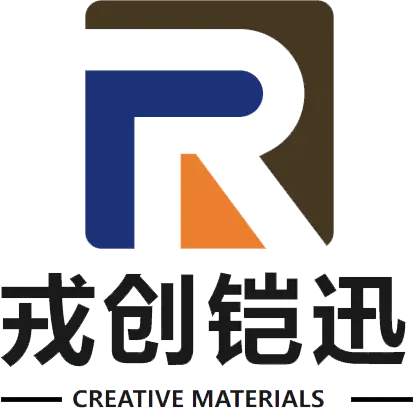In recent years, the trade dynamics between the United States and China have shifted significantly, marked by the implementation of tariffs that were expected to dampen the growth of Chinese manufacturing. Contrary to these expectations, China has demonstrated a remarkable resilience, continuing to advance and innovate within various sectors. One notable area of growth is in the production and application of high-tech materials, such as Aluminium Oxynitride. This advanced material is not only crucial in industries ranging from defense to optics, but it also symbolizes China's commitment to bolstering its manufacturing capabilities against external pressures. As we delve into the factors contributing to this resilient growth, it becomes clear that the strategic focus on cutting-edge materials like Aluminium Oxynitride is empowering Chinese manufacturers to thrive, even amidst the challenges posed by international tariffs.

The ongoing trade tensions between the US and China, exemplified by the implementation of tariffs, have significantly reshaped global manufacturing trends. As companies grapple with increased costs and shifting supply chains, many are seeking alternatives to mitigate risk. The tariffs have not only affected the pricing of goods but also prompted manufacturers to explore innovative materials that can enhance product durability and performance, such as Aluminium Oxynitride. This advanced material, known for its superior strength and resilience, is gaining traction in various industries, highlighting a shift in focus towards high-performance manufacturing solutions.
Moreover, the resilience of Chinese manufacturing amidst these tariffs underscores an adaptive strategy that many firms are employing. Chinese manufacturers are leveraging their capabilities to innovate and produce higher-quality goods, which can withstand both domestic and international market pressures. This resilience is characterized by a shift towards automation and digitalization, allowing for efficient production processes that reduce dependency on foreign materials and technologies. By embracing innovation and focusing on quality, Chinese manufacturers are not only surviving but thriving, potentially setting new trends in global manufacturing dynamics as they respond to the challenges posed by trade policies.
In the face of escalating US-China tariffs, Chinese manufacturers have displayed remarkable resilience by adopting innovative strategies to adapt and thrive in a shifting economic landscape. According to a recent report by the China National Bureau of Statistics, the country’s manufacturing output increased by 5.6% in 2022, demonstrating an ability to pivot quickly and seize new opportunities. Emphasizing automation and smart manufacturing, companies are leveraging advanced technologies to reduce costs and enhance efficiency. This strategic shift helps to mitigate the impact of tariffs and positions these manufacturers for long-term growth.
Moreover, the focus on materials like aluminium oxynitride has been pivotal. Research from the Chinese Academy of Sciences indicates that this advanced material not only improves product durability but also offers significant cost advantages over traditional materials. As global demand for high-performance materials rises—projected to grow at a CAGR of 8.3% by 2025—Chinese manufacturers are leveraging this opportunity to enhance their product offerings. By integrating innovative materials and optimizing production processes, they are not just surviving the trade challenges but are also setting the stage for a highly competitive future in the global market.
This chart illustrates the growth of Chinese manufacturing output from 2018 to 2023, highlighting the influence of US-China tariffs and the adaptation strategies of manufacturers, particularly focusing on the aluminium oxynitride sector.
In recent years, Chinese manufacturing has demonstrated remarkable resilience, especially in the face of US-China tariffs. One of the pivotal elements empowering this growth is the strategic incorporation of aluminium oxynitride (AlON) into products. AlON, known for its superior durability and light transmission properties, provides a distinct competitive edge. Manufacturers leveraging AlON can create innovative solutions that meet the stringent demands of global markets, ultimately positioning themselves as leaders in their respective industries.
The adoption of aluminium oxynitride enhances product competitiveness by enabling the development of advanced materials that are both lightweight and strong. In sectors such as electronics, defense, and optics, AlON's unique attributes allow for the production of devices that can withstand harsh environments while maintaining high performance. This innovation not only caters to existing market needs but also empowers manufacturers to explore new applications and expand their market presence. By utilizing cutting-edge materials like AlON, Chinese manufacturers are not only adapting to external pressures but also setting the stage for future growth through technological advancement and innovation.

The imposition of tariffs between the US and China has reshaped the manufacturing landscape significantly. However, many Chinese manufacturing firms have demonstrated remarkable resilience and adaptability in the face of these challenges. For instance, companies within the aluminium oxynitride sector have capitalized on innovative production techniques and an increased focus on quality. According to a report by the China National Equipment Industry Association, the aluminium oxynitride market is projected to grow at a CAGR of 7.2% from 2020 to 2025, driven by its applications in defense and optics, alongside emerging opportunities in electronics.
Case studies of firms such as the Shenzhen Optical Science and Technology Co. illustrate how strategic pivots have taken place post-tariffs. By investing in research and development and enhancing production capabilities, these companies have not only maintained their foothold in international markets but have also expanded their export portfolios. A recent industry analysis by Mordor Intelligence highlighted that Chinese manufacturers are increasingly enhancing their supply chain efficiency, which has allowed them to reduce costs and improve delivery times, thus offsetting the financial pressure from tariffs. This proactive approach showcases how adaptability fosters resilience even amid trade tensions.
The Chinese manufacturing industry has demonstrated remarkable resilience and innovation, despite the challenges posed by US-China tariffs. As manufacturers adapt to these pressures, they are increasingly turning to advanced materials like aluminium oxynitride. This innovation not only enhances product durability but also opens up new avenues for applications across various sectors, from defense to consumer electronics, allowing Chinese firms to maintain their competitive edge.
Tips for resilient growth include investing in research and development. By prioritizing R&D, manufacturers can foster innovation that leads to more efficient processes and superior products. Additionally, forming strategic partnerships can bolster supply chains and facilitate knowledge exchange, which is essential for navigating trade challenges. Companies should also embrace digital transformation, leveraging technologies such as AI and IoT to optimize production and reduce costs.
Looking ahead, the future of Chinese manufacturing appears promising. With a focus on sustainability and smart technologies, manufacturers are well-positioned to capitalize on global trends. Emphasizing adaptability and continuous improvement will be key for companies aiming to thrive in this evolving landscape, ensuring they remain leaders in the global market.

